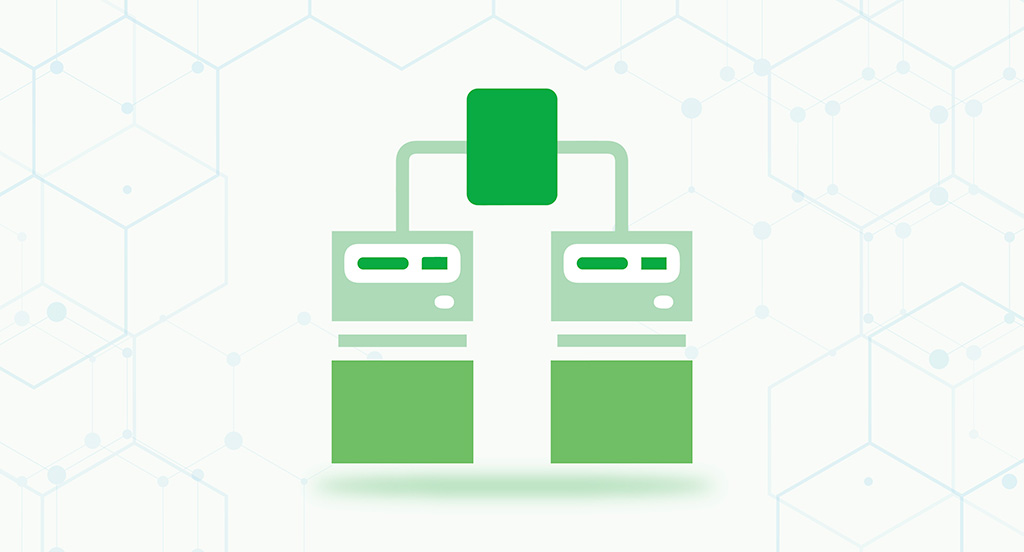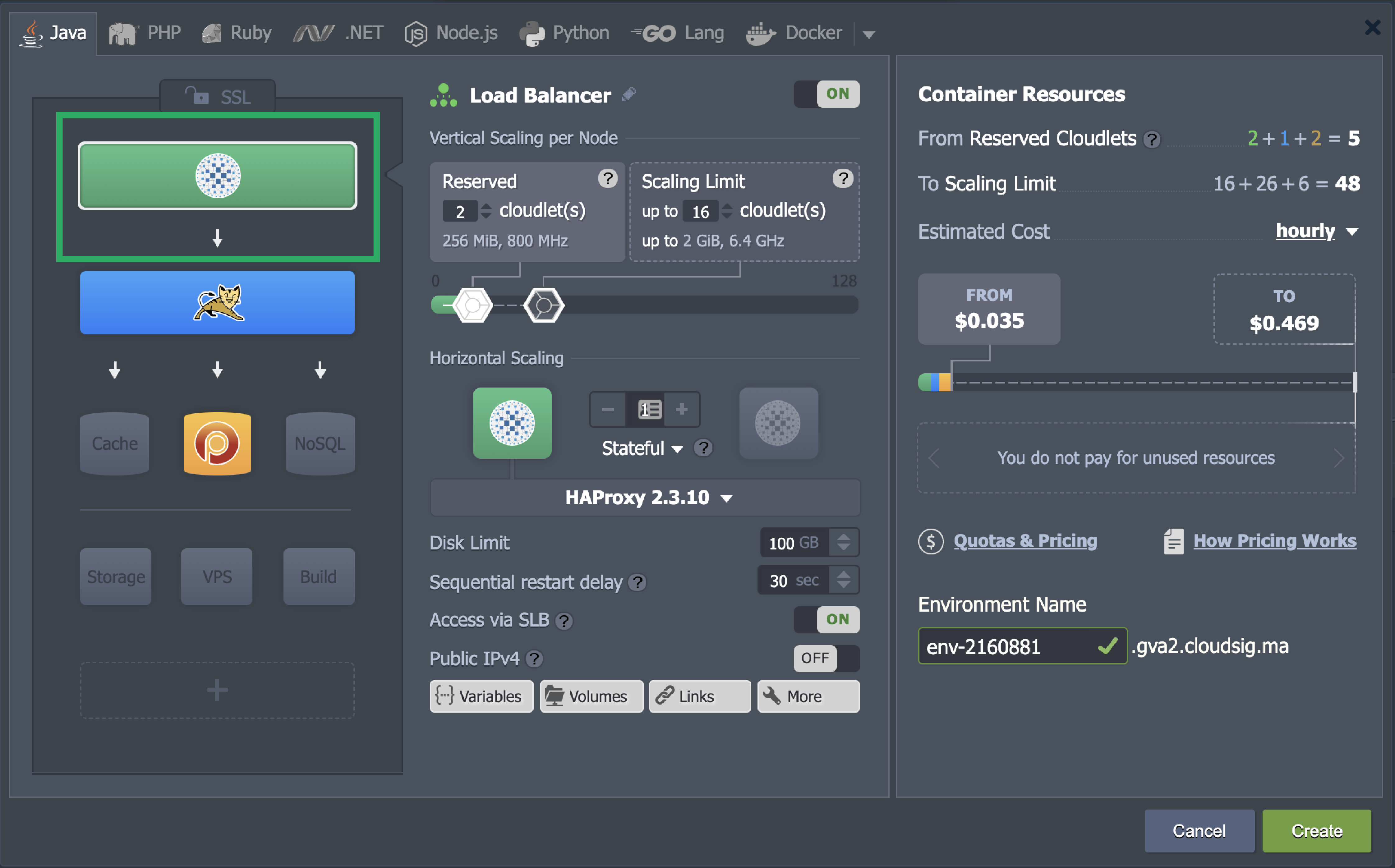On CloudSigma’s PaaS Dashboard settings, you will find a tool known as a load balancer. Load balancers are dedicated nodes that allow you to perform load balancing– the process of traffic navigation and workload distribution across different components in your infrastructure. CloudSigma PaaS gives you the option to add these instances manually into your environment. You will get the option automatically when scaling your application server to distribute requests between backends:
You can use different third-party stacks to perform load balancing. CloudSigma PaaS currently supports four different managed load balancer stacks:
- NGINX
- HAProxy
- Varnish
- Apache
- LiteSpeed Web ADC
Let’s explore each one of them and their functionalities in a bit more detail:
NGINX
An open-source server that is used far and wide across the world for load balancing. The reason behind its popularity is its superior performance despite being very cost-effective. Not only that, but it is also one of the easiest load balancers to use. It does not require any extra steps or configurations to operate it. NGINX can be used to cache content and perform load balancing in Layer 7 in addition to its optimum scalability and security features.
HAProxy
High Availability Proxy, also known as HAProxy, is another open-source server that is particularly useful for businesses dealing with greater amounts of traffic and thus requiring speed and high availability. It can also be used for load balancing and proxying for TCP and HTTP-based applications. HAProxy is able to handle big traffic loads without compromising the load balancing because it operates on an event-driven model. As such, the single process proxy utilizes a small amount of memory, allowing it to keep processes running smoothly despite concurrent requests.
Varnish
Varnish is often described as a caching HTTP reverse proxy, a feature that makes it the ideal app accelerator for websites that experience higher traffic loads. As an accelerator, it enhances the speed of your operations by offloading the static objects delivery or caching. Initially, Varnish was designed to work only with HTTP. However, CloudSigma PaaS expands its coverage by providing it in combination with the NGINX server so that it runs as an HTTPS proxy. Thus, the Varnish stack can work with secure data as well as Custom SSL.
Apache
Apache is one of the more well-known names when it comes to open-source traffic distribution servers. This load balancer is particularly good for those who want the power of customization to design an environment that meets their individual requirements. The modular nature of the load balancer gives you that flexibility while also accounting for data security, centralized authentication/authorization, speed, reliability, and high availability.
LiteSpeed Web ADC
If you want to invest in a more innovative solution, then the LiteSpeed Web Application Delivery Controller is one of the most advanced HTTP load balancers. It promises unparalleled performance along with reliable security and protocol support. This commercial balancer offers HTTP/2 or QUIC support, gives you the option to use a firewall or anti-DDOS filtering in Layer 7 for security purposes, and a host of features to enhance its functioning. Some of its features include caching, acceleration, optimization, and offloading among many others.
It is preferable that users implement multiple compute nodes along with a load balancer. The goal is to maintain high availability in the system along with ensuring redundancy.
CloudSigma PaaS offers multiple options so that you can choose the optimal load balancing solution that fits your needs. You can learn more about our PaaS service right here. Give CloudSigma PaaS a try with our 7-day free trial or contact us if you want us to provide you with more details and a platform demo.
- 5 Tips to Achieve Optimal Cloud Computing Cost Efficiency - October 31, 2022
- CloudSigma Empowers Blockchain Infrastructure Provider with a Green, Reliable, and Cost-Efficient Cloud Platform - October 27, 2022
- Whitech Launches New Egypt Cloud Computing Offering, Powered by HPE and CloudSigma - October 17, 2022
- Key Aspects of Protecting your Data in the Cloud - September 20, 2022
- How to Configure MongoDB Replication and Automated Failover - September 19, 2022



